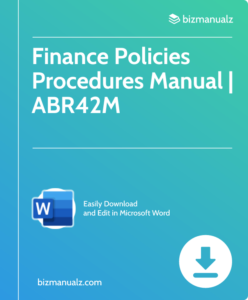Why Single Step Income Statement is Essential for Understanding Business Finances

In today’s complex business landscape, gaining a comprehensive understanding of an organization’s financial health is crucial for making informed decisions and managing resources effectively. One vital tool that facilitates this understanding is the single-step income statement. This article will explore the key elements of the single-step income statement, its benefits, and why it is essential for understanding business finances. Why single step income statement is essential for understanding business finances.
Definition of Single Step Income Statement
A single step income statement, also known as a single-step profit and loss statement, is a financial statement format that presents revenues and expenses in a straightforward and simplified manner.
It categorizes all revenues and gains in one section and all expenses and losses in another section, without any subtotals or additional calculations. The final result of the single step income statement is the net income or net loss of the business. By providing a clear and concise overview of a company’s revenues, expenses, and net profit or loss, the single-step income statement offers a concise snapshot of its financial performance.
Overview of Business Finances
Understanding the financial health of a business is crucial for making informed decisions and assessing its performance. Business finances encompass various aspects such as revenue generation, expense management, profitability, and financial stability.
Analyzing these factors allows stakeholders, including business owners, investors, lenders, and managers, to evaluate the viability and sustainability of the business. By delving into the intricacies of this financial statement, you will acquire the essential knowledge needed to interpret financial data accurately and make strategic decisions that drive success in the dynamic world of business.
Advantages of Using Single Step Income Statement
1. Simplicity and Clarity
One of the key advantages of using a single step income statement is its simplicity and clarity. By presenting all revenues and expenses in separate sections, it provides a straightforward and easily understandable overview of the financial performance of the business. This simplicity makes it ideal for small businesses or individuals with limited accounting knowledge.
2. Easy Identification of Revenue and Expenses
The single step income statement allows for the easy identification and categorization of revenues and expenses. By grouping all related items together, it becomes simpler to analyze the sources of revenue and the nature of expenses. This categorization assists in identifying areas of growth potential and areas where cost-cutting measures can be implemented.
3. Effective Financial Analysis
The single step income statement provides a foundation for conducting effective financial analysis. By examining the trends in revenues and expenses over a specific period, stakeholders can gain insights into the business’s financial performance. This analysis can be further enhanced by comparing the income statement with other financial statements, such as the balance sheet and cash flow statement.
4. Helpful for Decision-Making
Making informed decisions is essential for the success of any business. The single step income statement plays a crucial role in facilitating decision-making by providing a clear picture of the profitability of the business. It helps in evaluating the financial impact of various decisions, such as pricing strategies, cost reduction initiatives, and investment opportunities.
5. Accurate Profit Determination
The single step income statement ensures accurate determination of the net income or net loss of the business. By aggregating all revenues and expenses in separate sections, it eliminates the possibility of errors or omissions that may occur in a more complex statement format. This accuracy is crucial for assessing the financial position of the business and meeting reporting requirements.
Disadvantages of Using Single Step Income Statement
1. Doesn’t Show the Tax Impact
A drawback of the single step income statement is that it does not provide information about the tax impact on the business’s profitability. Taxes can significantly affect the overall financial performance of a business, and understanding their impact is crucial for effective tax planning and compliance. Therefore, businesses relying solely on the single step income statement may need to supplement it with additional information or consult tax professionals.
2. May Oversimplify Complex Businesses
While the simplicity of the single step income statement is advantageous for small businesses, it may fall short in accurately reflecting the financial performance of complex businesses.
Businesses with multiple revenue streams, diverse expenses, or complex operations may require a more detailed analysis provided by a multi-step income statement. It is important to consider the complexity of the business when choosing between the two statement formats.
Comparison with Multi-Step Income Statement
1. Additional Steps in Multi-Step Income Statement
Unlike the single step income statement, the multi-step income statement includes additional steps and calculations. It separates revenues and expenses into different categories, such as gross profit, operating income, and net income.
This format allows for a more detailed analysis of the business’s profitability, as it considers various factors such as cost of goods sold, operating expenses, and non-operating income or expenses.
2. Benefits of Multi-Step Income Statement
The multi-step income statement provides a more comprehensive view of a business’s financial performance compared to the single step income statement. It allows for a detailed examination of revenue sources, cost of goods sold, and different types of expenses, offering a clearer understanding of the factors influencing profitability. For businesses with complex operations or diverse revenue streams, the multi-step income statement is often recommended.
3. When to Choose Single Step over Multi-Step
While the multi-step income statement offers a more detailed analysis, there are scenarios where the single step income statement is sufficient. Small businesses or individuals with straightforward operations and limited accounting resources may find the single step income statement more practical and easier to understand.
Additionally, for businesses without complex revenue sources or significant variations in expenses, the single step income statement can effectively communicate their financial performance.
Examples of Single Step Income Statement
1. Small Retail Business
A small retail business could utilize a single step income statement to assess its financial performance. The revenues section would include sales revenue, while the expenses section would incorporate expenses such as cost of goods sold, employee wages, rent, utilities, and advertising costs.
The difference between the total revenues and total expenses would represent the net income or net loss of the business.
2. Freelancer or Consultant
Freelancers or consultants, who primarily generate revenue through client engagements, can also benefit from a single step income statement.
Their revenues section would include fees earned from clients, while the expenses section would comprise business-related expenses such as office supplies, professional development, and marketing expenses. Analyzing the net income derived from the statement would provide insights into their profitability and financial performance.
Tips for Creating a Single Step Income Statement
1. Categorize Revenue and Expenses Clearly
To ensure clarity and accuracy, it is essential to categorize revenue and expenses clearly when creating a single step income statement. Differentiate between sources of revenue, such as sales revenue or service fees, and classify expenses into appropriate categories, such as cost of goods sold, operating expenses, or non-operating expenses. This categorization enables a comprehensive analysis of the financial performance of the business.
2. Include Gross Profit and Net Income
While the single step income statement focuses on presenting revenues and expenses, it is advisable to include additional metrics such as gross profit and net income.
Gross profit represents the difference between sales revenue and the direct cost of producing goods or services, providing insights into the profitability of core operations. Net income, on the other hand, provides a comprehensive view of the business’s profitability after considering all expenses.
Single Step Income Statement is Essential for Understanding Business Finances
The single step income statement is an essential tool for understanding business finances. Its simplicity and clarity make it a practical choice for small businesses or individuals with limited accounting knowledge.
By providing a straightforward overview of revenues and expenses, it facilitates effective financial analysis and informed decision-making. However, it is important to consider the limitations of the single step income statement, such as the lack of tax impact visibility and the potential oversimplification of complex businesses.
Ultimately, the choice between the single step or multi-step income statement depends on the nature and complexity of the business’s operations.
















Leave a Reply